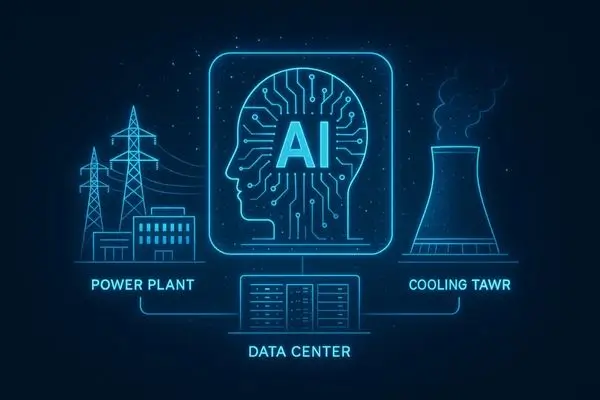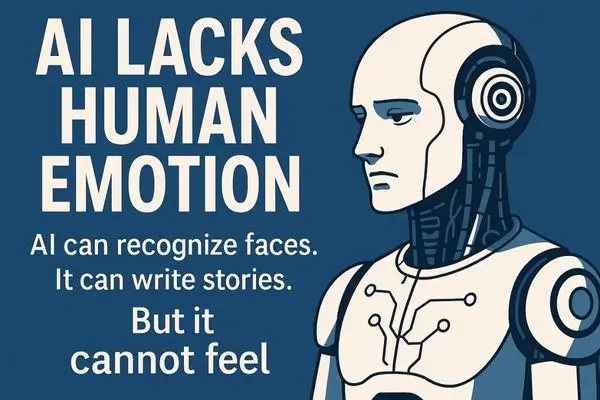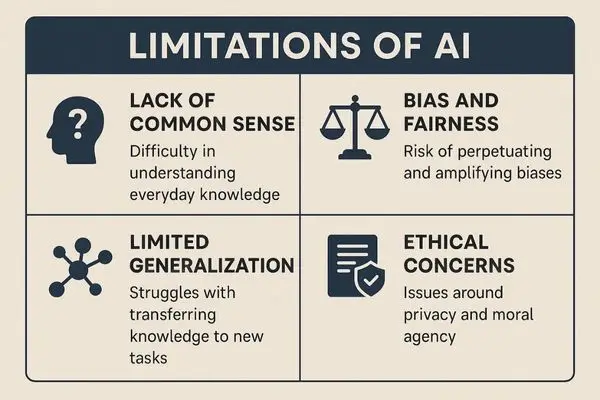A Simple Guide to the Current Limitations of AI
Main Topics
Table of Contents
Introduction: What is AI?
Artificial Intelligence (AI) is changing our world. From intelligent assistants to self-driving cars, AI is everywhere. It helps in hospitals, banks, schools, and even our homes. But while AI is powerful, it is not perfect.
This article will help you understand the main limitations of AI. We will explore how far AI can go—and where it still struggles to excel. Now we are describing the significant challenges of artificial intelligence.
Summary: Challenges of Artificial Intelligence
| # | Limitation | Explanation |
|---|---|---|
| 1 | Lack of Common Sense | AI can’t reason like humans; it follows data patterns without proper understanding. |
| 2 | Bias in Data | AI learns from existing data, which can contain cultural, racial, or gender biases. |
| 3 | Limited Creativity | It can be exploited for hacking, misinformation, or cyberattacks. |
| 4 | High Data Dependence | AI needs massive, high-quality datasets; without them, performance drops. |
| 5 | Poor Context Understanding | Struggles with sarcasm, emotions, and nuanced meanings in conversation. |
| 6 | Security Vulnerabilities | AI generates based on patterns; it can’t truly innovate or think beyond its training. |
| 7 | Cost & Resources | Development, training, and maintenance require huge computational and financial resources. |
| 8 | Job Displacement | Automation may replace human jobs, especially in repetitive or low-skill sectors. |
| 9 | Ethical Concerns | Questions around privacy, surveillance, and misuse are growing. |
| 10 | Overfitting Issues | AI models can perform well on training data but fail in real-world applications. |
| 11 | Lack of Transparency | Complex models like deep learning work as “black boxes” — decisions are hard to explain. |
| 12 | Limited Adaptability | AI struggles with unexpected situations or scenarios outside its training. |
| 13 | Dependence on Human Input | AI can’t reason like humans; it follows data patterns without true understanding. |

1. AI Lacks Human Emotion
AI can recognize faces. It can write stories. But it cannot feel.
AI doesn’t have emotions like happiness, fear, or love. It only follows the rules it was trained on. This limits AI’s ability to understand human behaviour.
See also: Human vs AI in 2025: The Ultimate Intelligence War.
For example:
- AI cannot comfort a sad friend.
- It cannot understand sarcasm or irony well.
- It may misunderstand human feelings in a conversation.
This makes AI less valuable in jobs that require empathy, such as therapy or teaching.

2. AI Needs a Lot of Data
AI learns by studying large amounts of data. The more data it gets, the better it learns.
But here’s the problem:
- Getting good data is hard.
- Some data may be biased, incomplete, or incorrect.
- If the data is insufficient, the AI will make wrong decisions.
This is called “Garbage In, Garbage Out.” Even the best AI will fail if it learns from incorrect or misleading information.
3. AI Can Be Biased
AI doesn’t choose its values. It learns from people.
If the people behind the data are biased, the AI system will also become biased. For example:
- If an AI is trained with only photos of light-skinned faces, it may fail to recognize darker-skinned ones.
- If it reads biased hiring records, it may lead to unfair hiring decisions.
This can cause real-world harm—especially in healthcare, policing, or finance.
4. AI Can’t Think Like Humans
AI follows patterns. It doesn’t honestly “think.”
Here’s what AI can’t do:
- Think creatively
- Imagine the future
- Understand common sense
For example, a child knows that “ice melts in the sun.” An AI might not. That’s because AI doesn’t live in the real world. It only “reads” what we feed it.
This makes AI bad at generalising and solving new problems without help.
Read this excellent, informational, amazing and fun article. What point makes you laugh?
20 Bizarre & Shocking Facts about the Tech Industry
5. AI Can’t Make Ethical Decisions
AI doesn’t know what is right or wrong. It can’t judge values.
Imagine a self-driving car. If it must choose between hitting a tree or hitting a pedestrian, what should it do?
That’s a tricky question—even for people. But AI can’t answer it. It has no moral understanding. It just follows its code.
So, humans must still guide AI when ethics are involved.

6. AI Depends on Energy and Resources
Training AI requires a significant amount of energy. It uses:
- Powerful computers
- Big servers
- Tons of electricity
Some large AI models use as much energy as hundreds of homes.
This raises concerns about:
- Environmental impact
- Sustainability
- Access in poor regions
AI might not be the right choice for areas with low tech or high power costs.
7. AI Can Be Hacked or Misused
AI is not always safe. Hackers can:
- Trick AI into making wrong decisions
- Use AI to create fake content (deepfakes)
- Spy on users using intelligent assistants
Even good AI can be used for bad purposes. Governments, companies, or criminals may misuse it.
We need strong laws to protect users and systems.
8. AI Can’t Replace Human Jobs Fully
Many people fear that AI will take all the jobs.
It’s true—AI is automating many tasks. But there are limits:
- AI can’t do creative work like writing original music or painting emotions.
- AI can’t replace caring jobs like nursing, counselling, or teaching children.
- AI requires human intervention to manage, check, and train it.
Instead of replacing jobs, AI is more likely to change how we work.
9. AI Has No Self-Awareness
AI doesn’t know it exists.
Even the most advanced AI doesn’t understand:
- Who it is
- What is it doing
- Why is it doing it
It just runs code. It has no goals or desires. So it cannot take responsibility.
That’s why humans must stay in control.
10. AI is Expensive to Build and Maintain
Creating an innovative AI model is a costly endeavour.
You need:
- Expert engineers
- Huge data sets
- Advanced computers
- Regular updates and security
Small businesses or poor countries may not afford it. That creates a tech gap between rich and poor regions.
AI should not leave anyone behind.
11. AI Can’t Understand Context Well
AI may know the words—but not always the meaning.
For example:
- It may confuse “bat” (animal) with “bat” (baseball).
- It may not get jokes or cultural references.
- It may fail to respond appropriately in real-time conversations.
That’s because AI doesn’t have real-world experiences.
Humans use memory, emotion, and instinct. AI just uses code.
12. AI Needs Supervision
AI doesn’t run on its own. People must:
- Set its goals
- Test its results
- Fix its mistakes
- Update its rules
If we leave AI alone, it can cause serious problems.
That’s why human oversight is critical. AI should assist, not replace, human judgment.
13. AI Lacks Legal Accountability
If an AI makes a mistake, who is responsible for it?
- The company?
- The programmer?
- The user?
There is no clear answer yet. Many countries are still developing laws related to AI.
Until we have legal clarity, AI systems remain risky in areas like:
- Healthcare
- Law enforcement
- Finance
We need better rules to keep AI fair and safe.
Conclusion: AI Has Power—But Also Limits
AI is a powerful tool. It can solve problems, save time, and even save lives.
But it’s not magic.
It has apparent limitations:
- No emotions
- No ethics
- No creativity
- No common sense
It can be biased, hacked, misused, or misunderstood.
So, what should we do?
We must use AI carefully.
We must keep humans in control.
We must create strong laws and fair rules.
We must also teach people how to work with AI—not against it.
Only then can we build a future where AI helps everyone, not just a few.
Final Thoughts
AI is not our enemy. But it is also not a perfect friend.
By understanding its limitations, we can utilise it more effectively.
We can build more innovative tools, safer systems, and stronger societies.
And that’s how we create a better digital future—for all.
See Also: This article is about AI on your wrist: Google Gemini on Wear OS 4: Best Guide to AI on Your Wrist
Pingback: Samsung One UI 8: Release Date, Best Features, All About it Explained